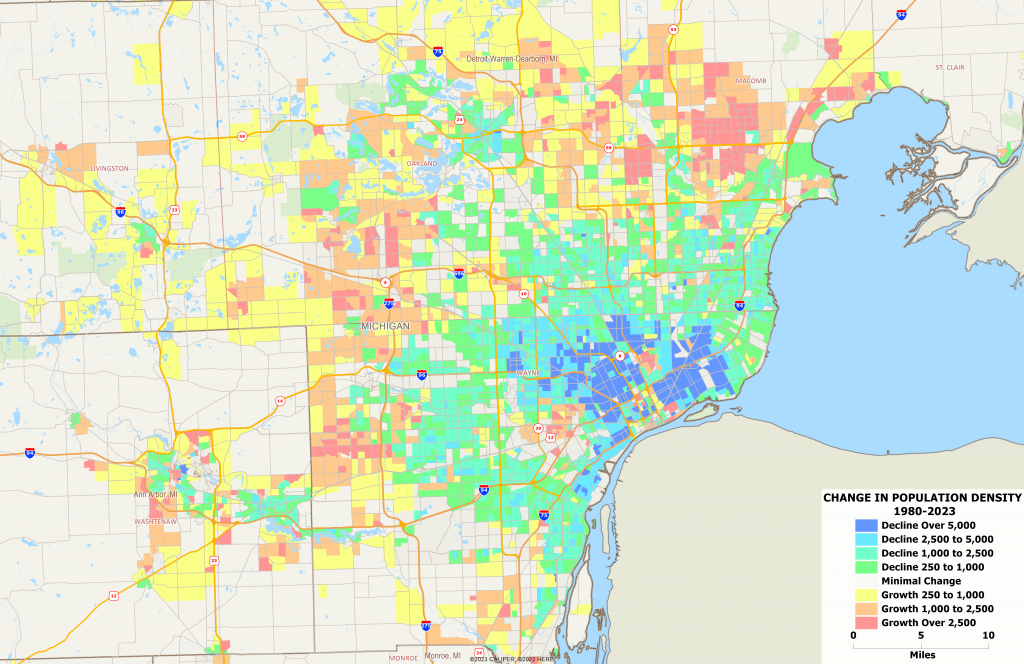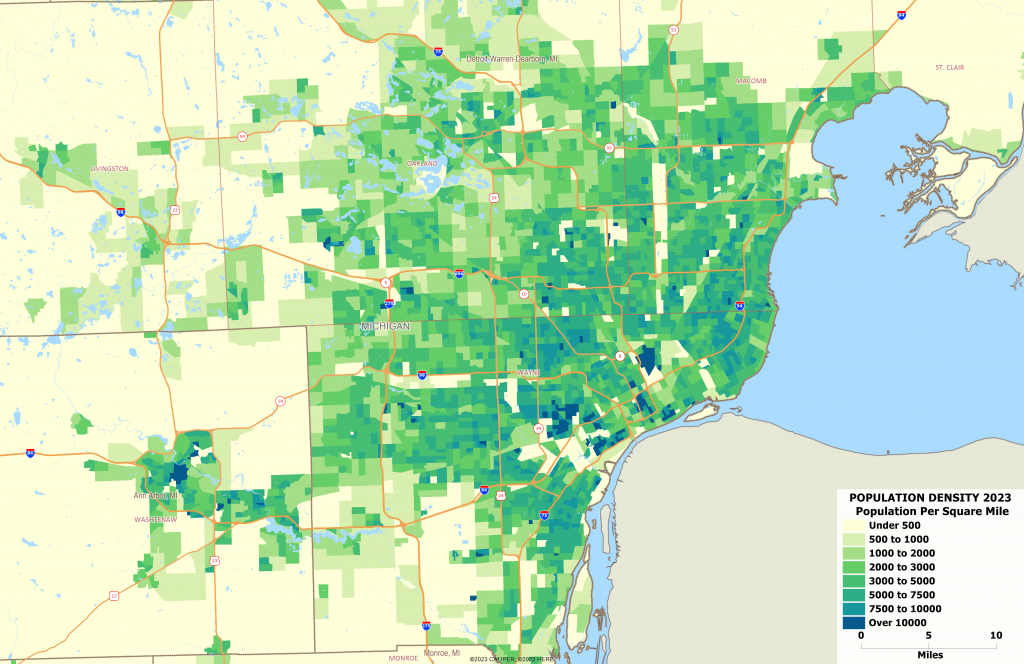The largest city in the state of Michigan, Detroit has a long history as an automotive hub. But with jobs moving away, mostly to foreign countries, the city is in a state of urban decay and declining population. While some nearby suburban areas are growing, the city itself continues to struggle and even filed for bankruptcy 10 years ago. What are the demographics of Detroit, and what can be done to revitalize their city?
The population changes in Detroit are well documented. In 1950, the city held 60% of the state’s total population, but today, less than 10% of the state’s population call it home. The area outside of Detroit and its larger metropolitan area have grown, but the downtown core has suffered as jobs have left and buildings sit vacant and deteriorate. The maps below show the population density with changes from 1980 until today. As you can see, the downtown core has suffered the most, while the outer suburbs are seeing decent growth as people leave the city center. This is also evident from the median travel time to work increasing over time, which today is nearly 10 minutes longer than the national average.




While many of those in the workforce, nearly 20%, work in manufacturing, that number was once much larger during the height of the automotive manufacturing in Detroit. Today, other major occupations include production occupations, health care and professional, scientific and technical services.
Gentrification is coming, but slowly. A new sports arena for the NBA and NHL teams has brought some revitalization to downtown, including new condo buildings. Additionally, office buildings are bringing back some employment to downtown, and the average income is rising in upscale downtown areas. Could Detroit do enough to bring people back downtown, or will the suburbs continue to hold the bulk of citizens?
